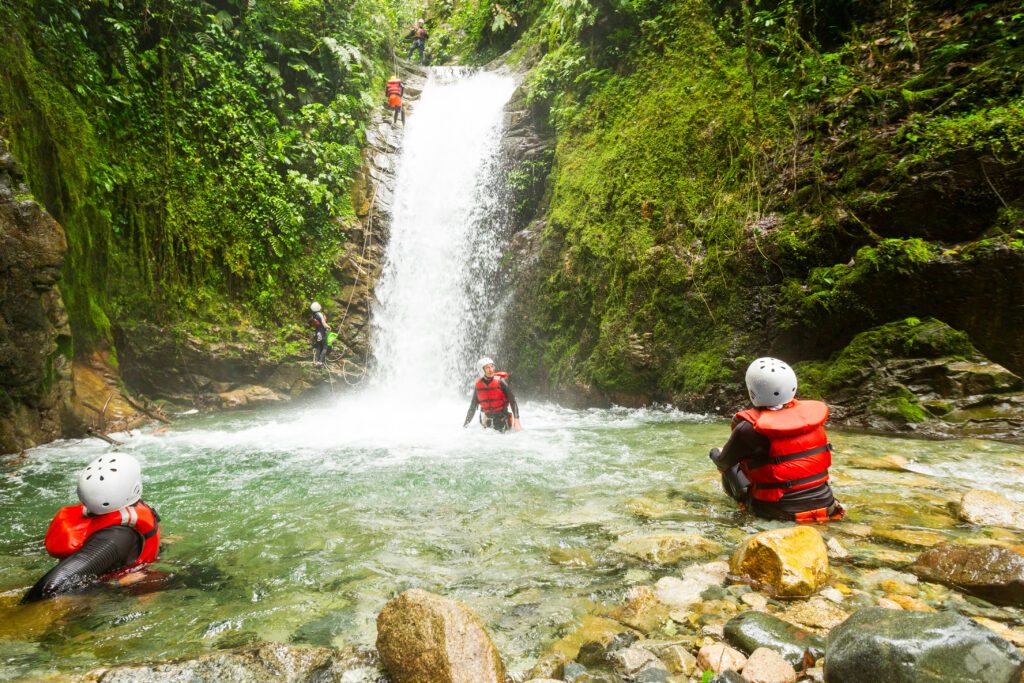Safe Outdoor Adventures: Security Tips for Exploring Nature with Self-Storage
Explore Nature Safely with Self-Storage Solutions
Embarking on outdoor adventures is an exhilarating way to explore nature, challenge yourself, and create lasting memories. Whether you’re hiking through forests, camping in remote wilderness areas, or embarking on epic road trips, prioritizing safety and security is essential to ensure a smooth and enjoyable experience. By incorporating outdoor adventure security tips and leveraging self-storage for safety, adventurers can minimize risks, prevent accidents, and make the most of their time in the great outdoors. In this comprehensive guide, we’ll explore safety strategies and security measures for nature exploration with self-storage, empowering you to embark on safe and memorable outdoor adventures.
Plan Ahead and Prepare
Before heading out on your outdoor adventure, take the time to plan ahead and prepare for potential risks, challenges, and emergencies that may arise along the way. Research your destination, familiarize yourself with local regulations, weather conditions, and terrain features, and create a detailed itinerary outlining your route, activities, and estimated timeline.
Pack essential safety gear, first aid supplies, and emergency equipment such as maps, compasses, GPS devices, headlamps, and multi-tools to help navigate trails, signal for help, and address medical emergencies in remote locations. Check weather forecasts, trail conditions, and park alerts regularly and adjust your plans accordingly to avoid hazardous conditions or unsafe situations.
Share your itinerary with trusted friends, family members, or park rangers and inform them of your planned route, expected return time, and emergency contacts to ensure that someone knows your whereabouts and can assist in case of emergency. Carry a fully charged cell phone, satellite phone, or personal locator beacon (PLB) to call for help in case of emergency and ensure that you have access to communication and assistance when needed.
Practice Leave No Trace principles and minimize your impact on the environment by packing out all trash, disposing of waste properly, and respecting wildlife, vegetation, and natural habitats. Leave natural objects and cultural artifacts undisturbed, avoid feeding wildlife, and follow established trails and designated campsites to protect fragile ecosystems and preserve the wilderness for future generations.
Secure Your Belongings
Keeping your belongings safe and secure is crucial when exploring nature, especially in remote or unfamiliar environments where theft, vandalism, or wildlife encounters may pose risks to your personal property. Utilize self-storage options such as lockers, storage bins, or vehicle storage solutions to safeguard your belongings while you’re out adventuring.
Store valuable items such as electronics, cameras, wallets, and keys in locked storage containers or secure compartments to prevent theft, damage, or loss while you’re away from your campsite or vehicle. Consider investing in waterproof, shockproof, or crushproof cases and containers to protect sensitive equipment from environmental hazards such as water, dust, or impact.
Use locking mechanisms such as padlocks, cable locks, or combination locks to secure storage containers, gear boxes, or equipment racks to fixed objects such as trees, rocks, or vehicle racks to deter theft and unauthorized access. Choose high-quality locks with tamper-resistant features and durable construction to withstand harsh weather conditions and prevent tampering or break-ins.
Avoid leaving valuable items unattended or in plain sight in your vehicle or campsite, as this can attract unwanted attention from thieves or wildlife looking for easy targets. Keep doors, windows, and hatches securely locked at all times and store valuables out of sight in locked glove compartments, trunks, or storage compartments to minimize the risk of theft or break-ins.
Be Aware of Wildlife
Encountering wildlife is an inevitable part of outdoor adventures, and understanding how to safely coexist with wildlife is essential to avoid conflicts, injuries, or accidents. Educate yourself about the wildlife species that inhabit the area you’ll be visiting, including their behavior, habitat preferences, and potential risks they may pose to human safety.
Keep a safe distance from wildlife and avoid approaching or feeding animals, as this can disrupt their natural behaviors, habituate them to human presence, and increase the risk of conflicts or aggressive encounters. Use binoculars, telephoto lenses, or spotting scopes to observe wildlife from a distance and minimize disturbance to their natural habitat.
Store food, garbage, and scented items securely in bear-proof containers, lockers, or storage bins to prevent wildlife from accessing them and reduce the risk of attracting bears, raccoons, rodents, or other scavengers to your campsite or vehicle. Dispose of food waste properly in designated trash receptacles or bear-proof dumpsters and avoid leaving food or scraps unattended.
Be prepared to encounter wildlife while hiking, camping, or exploring remote areas and know how to respond appropriately in case of encounters with aggressive or dangerous animals. Carry bear spray, air horns, or other wildlife deterrents and know how to use them effectively to deter aggressive wildlife and protect yourself and others from harm.
Practice Fire Safety
Campfires are a beloved tradition of outdoor adventures, providing warmth, light, and a focal point for socializing and cooking in the wilderness. However, practicing fire safety is essential to prevent wildfires, protect natural resources, and ensure the safety of yourself and others while enjoying outdoor activities.
Check local regulations, fire restrictions, and weather conditions before lighting a campfire and obtain any required permits or permissions from park authorities or land managers. Choose designated fire rings, fire pits, or established campfire areas to minimize the risk of spreading wildfires and follow Leave No Trace guidelines for building and extinguishing campfires responsibly.
Clear vegetation, debris, and flammable materials from around the campfire area and create a fire-safe zone with a minimum clearance of 10 feet in all directions to prevent accidental ignition and control the spread of flames. Use fire starters such as matches, lighters, or fire sticks to ignite fires and avoid using accelerants such as gasoline or lighter fluid, which can cause uncontrollable fires and explosions.
Keep a sufficient supply of water, sand, or dirt nearby to extinguish the fire quickly in case of emergencies and never leave a campfire unattended or allow it to burn out of control. Use a shovel or rake to stir and mix the ashes, embers, and coals thoroughly, and pour water over the fire until it is completely extinguished and cool to the touch before leaving the area.
Maximizing Safety with Self-Storage Solutions
Safe outdoor adventures require meticulous planning, preparation, and constant awareness to mitigate risks and ensure a rewarding experience in nature. By implementing these outdoor adventure security tips and leveraging self-storage solutions from Guardian Storage, adventurers can effectively safeguard their belongings, minimize risks, and fully immerse themselves in the beauty of the wilderness. Whether hiking, camping, or exploring remote areas, integrating these strategies ensures you can enjoy memorable outdoor experiences while protecting both yourself and the environment. With these measures in place, you’re well-equipped to embark on safe adventures, create lasting memories, and foster a deeper connection with the natural world.






